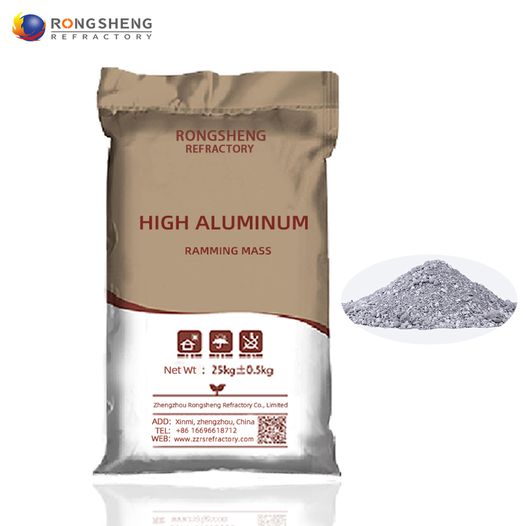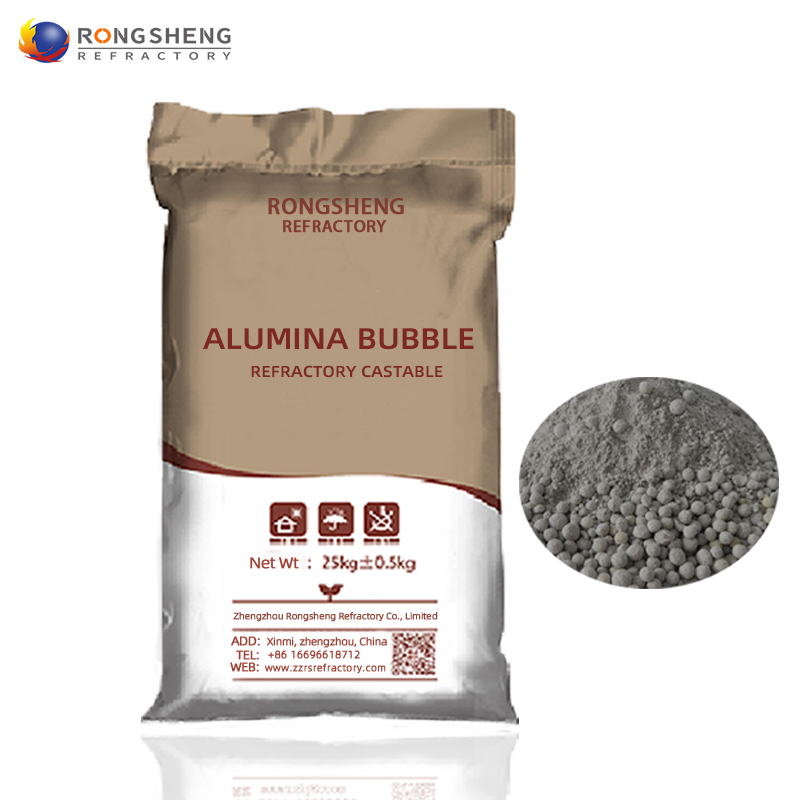La diferencia entre materiales hormigonables y apisonadores.
Castables and ramming materials are both unshaped refractory materials. Los moldes y materiales de apisonamiento están hechos de diversos agregados., polvos, y aglutinantes en una proporción razonable. They are both unshaped refractory materials. Although they are the same type of amorphous refractory materials, they differ greatly.
What are the differences between castables and ramming materials?

Construction methods are different
Confusión is constructed by ramming and hardened by heating. It is usually formed directly or after adding liquid by pounding (manual o mecanico) or vibration and hardens when the temperature is higher than room temperature.
Castables are constructed by pouring and can harden without heating. It is mainly delivered in dry form and is used after mixing with water or other liquids. Generalmente, vibration casting, non-vibration (self-flowing) fundición, ramming, fumigación, or tamping when necessary are used to form and harden without heating.
Different material classifications
Ramming materials are classified according to materials: alto contenido de alúmina, arcilla, magnesite ramming mass, dolomita, circonio, y materiales de apisonamiento refractarios de carburo de silicio y carbono.
Castables are classified by material: 1. According to porosity distribution, there are two types: dense calcinables refractarios and insulating refractory materials with a porosity of not less than 45%; 2. According to binders, they are divided into hydraulic bonding, chemical bonding, and cohesion and combined with refractory castables.

Different applications
Castable is the most widely produced and used unshaped refractory material at present. It is mainly used to construct various heating furnace linings and other integral structures. It is used in heavy-duty furnaces and heating equipment in metallurgy, petróleo, industria química, materiales de construcción, energia electrica, and machinery industry. High-quality shock absorbers are widely used in metallurgy, materiales de construcción, y metales no ferrosos. Smelting, químico, maquinaria, y otras industrias manufactureras. Products can also be used in smelting furnaces.
The ramming material is a bulk material made of silicon carbide, grafito, y antracita calcinada eléctricamente como materias primas, mixed with various ultrafine powder additives, and fused cement or composite resin as a binding agent. Se utiliza para llenar el espacio entre el equipo de enfriamiento del horno y la mampostería o el material de relleno para la capa niveladora de mampostería.. The ramming material has good chemical stability, resistencia a la erosión, y resistencia al desgaste.
 Fábrica de refractarios de Rongsheng
Fábrica de refractarios de Rongsheng
WeChat
Escanea el código QR con wechat